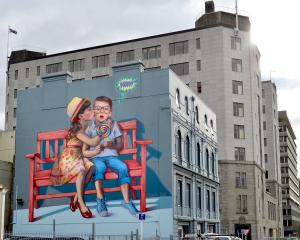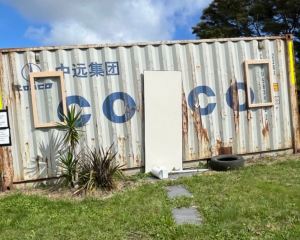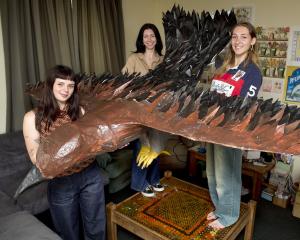A drive out to Taiaroa Head investigating the area where she would spend her summer proved to be a turning point for Christchurch artist Ana Iti.
She had been selected by Blue Oyster Gallery as its summer resident and the gallery had partnered with the Caselberg Trust to provide accommodation for the artist in the trust's Broad Bay cottage.
An emerging artist - she graduated from Christchurch's Ilam School of Art in 2012 - Ms Iti worked four days a week as a framer and spent the rest of her time in her studio working on her drawing and sculpture.
The residency allowed her the rare opportunity to work full-time on her art and also to have a solo exhibition in a larger space than before.
‘‘I knew I'd have to challenge myself.''
It was on the drive along Otago Peninsula, that the history behind Otago Harbour's original sea wall was mentioned.
It caught Ms Iti's attention and she began to research the history and stories behind the wall.
‘‘It's fascinating. There is a lot of strange stuff about it and the history of it's fraught, so I thought it would be interesting to look at.
‘‘It is this division between land and sea and the road is like this non-place, a transition.''
After visits to the Hocken Library to look at historical records, such as newspaper and archaeological reports, she realised how complex the history was.
‘‘I'll do my best to position myself in a thoughtful and understanding way with such a complex subject.''
She had completed a film on the subject and was also visiting the quarry where the stone came from.
She hoped to use some stone from the quarry in her sculpture for the Blue Oyster exhibition.
‘‘The construction of the wall is beautiful. Hand-stacked Blackhead honeycomb.
‘‘I'm still working it out. Once I see it, it'll be easier to resolve.''
The artist grew up in Blenheim and was always interested in art.
‘‘I knew I had a skill in that area.''
So she went to art school in Christchurch and majored in sculpture but it was not until she left the confines of art school and started practising on her own that her work developed.
‘‘It's a bit more intuitive. I managed to escape sculpture for a while but I'm coming back to it through drawing.
‘‘Sculpture is like this hard thing to bash out all the time. It's better to be project-orientated or you end up with a garage full of sculpture.''
2014 was a turning point in her work and the residency had come along at just the right time, she said.
‘‘Really, the challenge is good. It's helping me grow my practice more and do more complex, faceted things.
‘‘I hope from this I can get a good trajectory.''
She was enjoying her time in Dunedin and had found the Caselberg Trust very supportive.
‘‘They brought me vegetables from their garden when they visited and I had dinner with the trustees last night.''
For Blue Oyster Gallery director Chloe Geoghegan the residency enabled the gallery to be used during the quiet summer period and provided artists or writers with the freedom to create full-time without distractions.
Ms Iti was chosen after asking Ms Geoghegan for a reference for another residency.
‘‘She was right in front of me all the time. She is a contemplative thinker and researcher that is always working. She has shown dedication and involvement in things in a quiet way.''
Her 2014 exhibition Golden Hour, at artist-run space Room Four, demonstrated her progression as an emerging practitioner.
It was important to recognise that and the residency allowed her that freedom, she said.












